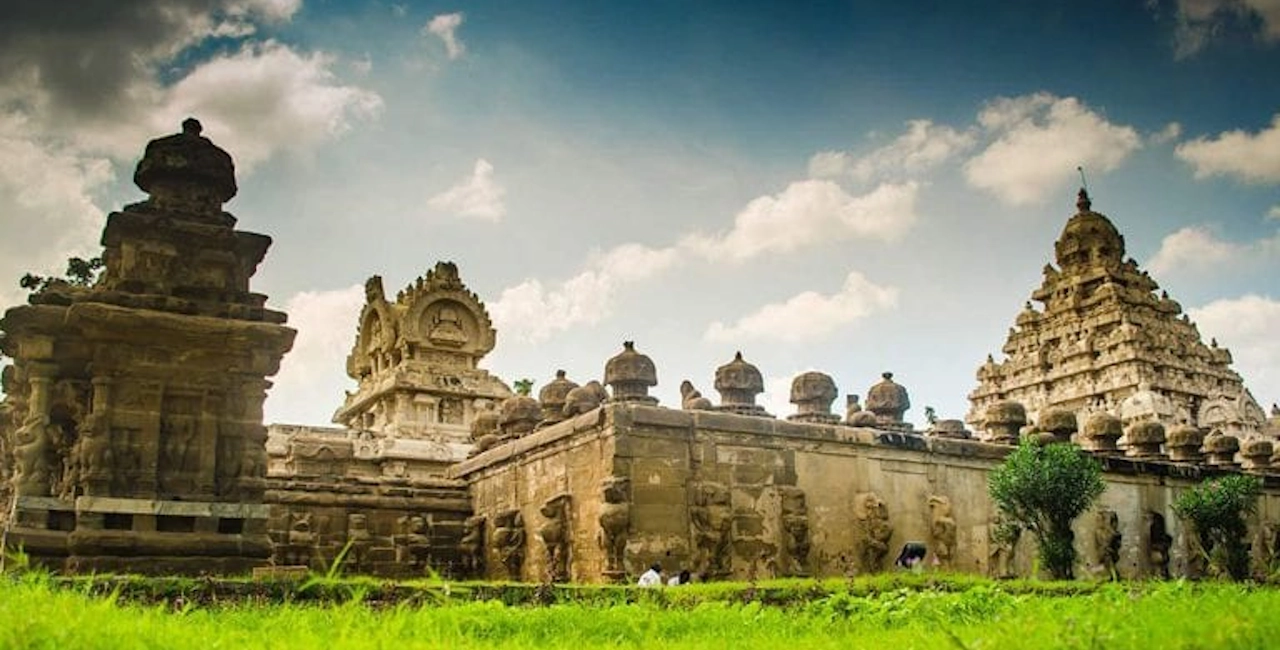Located in the southern state of Tamil Nadu, Kanchipuram is one of India’s oldest cities, renowned for its historical, cultural, and spiritual significance. Often referred to as the “City of Thousand Temples,” Kanchipuram is a destination that captivates pilgrims, tourists, and history enthusiasts alike. Known for its majestic temples, intricate silk sarees, and rich heritage, this ancient city, dating back over 2,000 years, stands as a testament to the artistic and architectural grandeur of South India.
Historical Significance
Kanchipuram’s history is steeped in legends, as well as documented royal patronage from some of India’s most illustrious dynasties. It served as a prominent capital city during the Pallava dynasty (4th–9th centuries) and later under the Cholas, Pandyas, and Vijayanagara empires. Kanchipuram has been a center for Tamil culture, learning, and spirituality, with roots in Hinduism, Jainism, and Buddhism. It was one of the ancient “seven moksha-puris” (holy cities for salvation), placing it alongside Varanasi and Ayodhya as one of India’s most sacred destinations.
The Temples of Kanchipuram
- Ekambareswarar Temple
Dedicated to Lord Shiva, Ekambareswarar Temple is one of the largest temples in Kanchipuram. It’s famous for its massive gopuram (tower) that stands at 59 meters, making it one of the tallest temple towers in South India. This temple is part of the “Pancha Bhoota Stalam” (five elements temples), representing the element of earth. The temple complex houses a sacred mango tree that is believed to be over 3,500 years old, with four branches representing the four Vedas. - Kailasanathar Temple
The Kailasanathar Temple is considered one of the most beautiful examples of early Dravidian architecture. Built by the Pallava king Rajasimha in the 7th century, the temple is dedicated to Lord Shiva and features stunning carvings, sculptures, and frescoes. It stands out for its intricate details, with stone carvings of deities, mythical creatures, and scenes from Hindu mythology that are remarkably well-preserved. Unlike other temples, it is quieter, making it a favorite among visitors for its peaceful ambiance. - Kamakshi Amman Temple
A revered Shakti temple, the Kamakshi Amman Temple is dedicated to the goddess Kamakshi, an incarnation of Parvati. It is one of the 51 Shakti Peethas (sacred sites associated with the goddess). Built during the reign of the Pallavas, this temple holds immense cultural and religious significance. Its inner sanctum features an enchanting image of the goddess in a seated meditative posture, which is unusual as most goddess temples depict her in a standing position. - Varadaraja Perumal Temple
This temple is dedicated to Lord Vishnu and is one of the 108 Divya Desams (sacred abodes of Vishnu) mentioned in Tamil literature. The Varadaraja Perumal Temple was constructed by the Chola dynasty in the 11th century, with later contributions from the Vijayanagara kings. Its towering gopurams, long corridors, and intricate carvings make it an architectural marvel, and it is especially popular during the Garuda Sevai festival, when the deity is carried in procession on a Garuda (mythical eagle) idol.
Kanchipuram Silk Sarees
Kanchipuram is as famous for its temples as it is for its exquisite silk sarees. Known for their rich color combinations, intricate zari (gold and silver thread) work, and durability, Kanchipuram sarees are crafted using pure mulberry silk. The tradition of weaving Kanchipuram sarees goes back over 400 years and is an important part of the city’s economy and identity. Each saree is handmade and can take up to two weeks to complete, making them valuable heirloom pieces. Tourists visiting Kanchipuram can visit saree shops and even witness artisans at work in the weaving villages nearby.
Cultural and Educational Heritage
Kanchipuram has long been a center of learning, particularly for Hindu philosophy, Sanskrit, Tamil literature, and classical music. It was home to renowned scholars and saints, such as the famous philosopher Adi Shankaracharya, who is believed to have established the Kanchi Kamakoti Peetham here. Jainism and Buddhism also flourished in Kanchipuram in the early centuries, and the city was a notable center for scholars and philosophers from various religions.
Festivals in Kanchipuram
Kanchipuram celebrates numerous festivals with great enthusiasm, and many are centered around its temples. The Brahmotsavam festival at the Ekambareswarar Temple, celebrated during the Tamil month of Panguni (March-April), is one of the grandest, attracting thousands of devotees. The Vaikunta Ekadasi at the Varadaraja Perumal Temple and Navaratri at the Kamakshi Amman Temple are also major celebrations. During these festivals, the temples are beautifully decorated, and the atmosphere is filled with vibrant rituals, music, and processions.
Best Time to Visit Kanchipuram
The ideal time to visit Kanchipuram is from October to March when the weather is pleasant and conducive for exploring the temples and markets. Summers (April to June) are hot, with temperatures often exceeding 40°C, while monsoons bring moderate rainfall, making the climate humid.
How to Reach Kanchipuram
- By Air: The nearest airport is Chennai International Airport, located about 70 kilometers away. From there, taxis and buses are available to reach Kanchipuram.
- By Train: Kanchipuram has its own railway station with regular trains connecting it to Chennai and other nearby cities.
- By Road: Well-connected by road, Kanchipuram can be easily reached by bus or car from Chennai, which is approximately 90 minutes away.
Conclusion
Kanchipuram is a city that offers a unique blend of spirituality, history, and craftsmanship. Its temples are architectural masterpieces that reflect centuries of devotion and cultural heritage, while its silk sarees are a timeless symbol of South Indian artistry. For anyone looking to explore the rich traditions and sacred spaces of India, Kanchipuram is a city that promises a memorable and enriching experience.


0 Comment